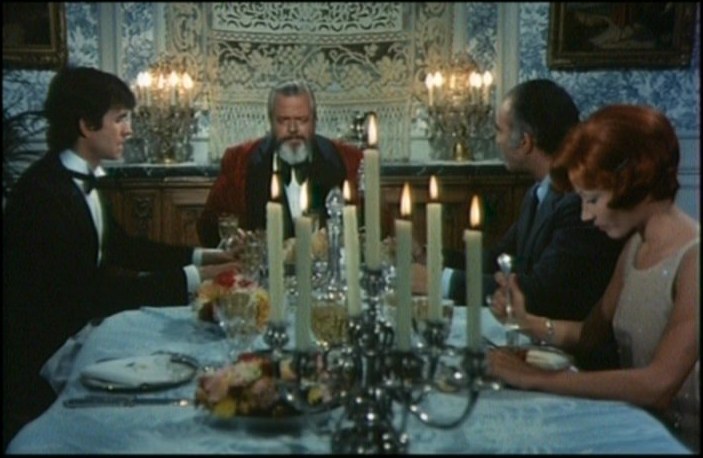
Claude Chabrol’s Ten Days Wonder tries to replace mystery with ambiguity, and it never works the way he wants it to. Ambiguity isn’t so mysterious as it is deficient. Even though he co-wrote the first book on Hitchcock, he didn’t learn the most valuable lesson from Hitch, which is that audiences need information in order to be interested. Hitchcock’s method of audience engagement is based on desire, implication and guilt, all of which Chabrol worked into the psychological conception of his film but not into his directing, which is the ultimate flaw of Ten Days Wonder: the audience is left wondering what it was all about.
Structurally, the story is non-committal. The film changes focus with every plot twist, losing track of all the previous threads, some of which are never picked up and given closure at all. The opening scene, with Anthony Perkins hallucinating about jellyfish and realizing he is covered in his own blood, is the initial mystery of the film – why is he bleeding? jellyfish? – and it is never concluded. This turns into a mysterious absence of four days of which Perkins cannot recall anything. This, too, is forgotten once it serves its purpose and leads the film into a new direction.
This new direction is into an oedipal situation involving a rich, controlling father (Orson Welles), his young wife who has fallen in love with their adopted son (Perkins), and Perkins’ trusted teacher (Michel Piccoli) whom Perkins asked to figure out his loss of memory. Chabrol must suffer from the same sort of amnesia, because he never gets around to fulfilling the mysteries of the film’s first thirty minutes. Ultimately, the solution that Chabrol gives revolves around a Christian guilt complex induced by the Ten Commandments. It is a perfect textbook answer, but as all students come to realize, textbooks are more rational than people are. Our neuroses are never that clear-cut, and their answers are never that satisfying, thus neither is Chabrol’s closure to Ten Days Wonder.

No comments:
Post a Comment